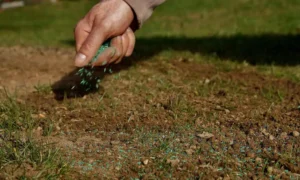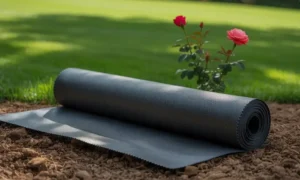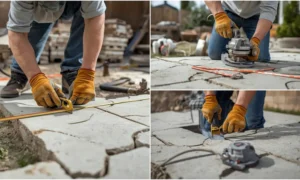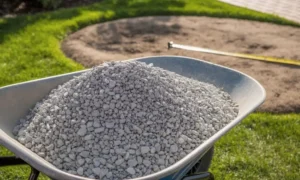How to drain gas from lawn mower tanks is an essential part of routine maintenance that helps ensure your equipment runs smoothly and lasts longer. Over time, gasoline can become stale and form deposits that clog the engine, making it harder to start and reducing efficiency. Draining lawn mower gas is especially important before winter storage, during seasonal tune-ups, or when the fuel has gone bad. Whether you’re storing your mower for an extended period or performing engine repairs, learning how to properly drain lawn mower gas can save you future headaches. In this guide, we’ll cover the most effective methods for draining lawn mower gas, including how to do it both with and without a siphon pump, so you can choose the best option for your situation.
Why is it necessary to empty a lawnmower's gas tank?
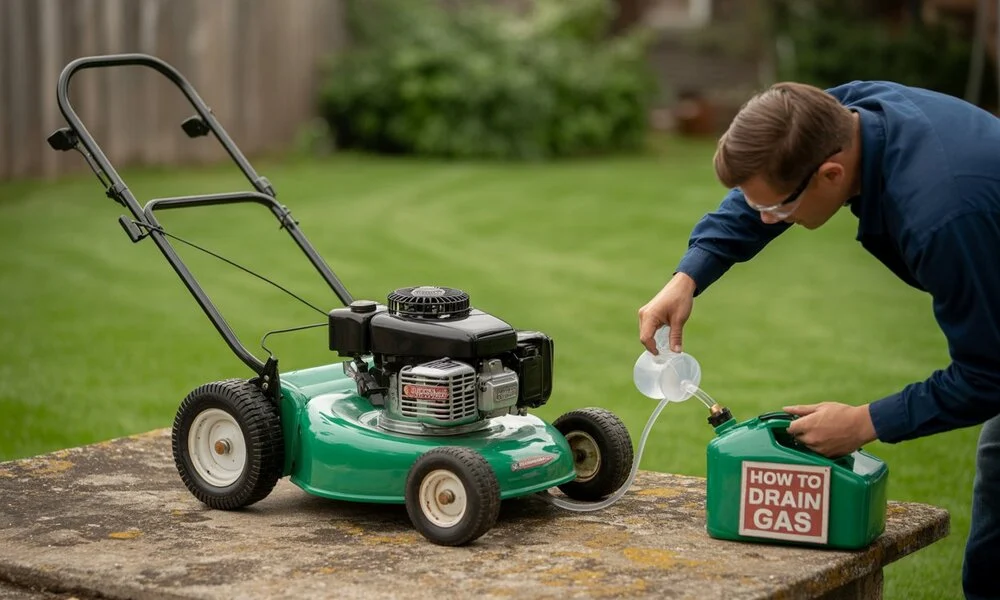
Draining gas from a lawn mower is an important maintenance step that helps keep your equipment running efficiently and safely. Here are the main reasons why you should drain gasoline from a lawn mower:
- Preventing Engine Damage from Stale Fuel
Gasoline can degrade over time, becoming stale and less combustible. Running on old fuel can cause your mower’s engine to misfire, run poorly, or even suffer long-term damage. By taking the time to drain gas from your lawn mower, you ensure it only runs on fresh fuel, preserving engine performance. - Avoiding Carburetor Clogging
Old gasoline tends to leave behind gummy deposits that can clog the carburetor, a vital part of the mower’s fuel system. If you drain gasoline from the lawn mower before storage or after extended use, you reduce the risk of expensive repairs caused by fuel system blockages. - Prepping for Seasonal Storage or Transport
Before storing your mower for the winter or transporting it, it’s smart to drain gas from the lawn mower to prevent leaks and fumes. This also avoids issues with starting the mower in the next season. - Safety and Efficiency Benefits
Gasoline is highly flammable. Removing it before maintenance, transport, or storage enhances safety. Plus, running a mower on clean fuel improves fuel efficiency and performance.
For landscape construction services in the Bay Area you can contact us.
Can Draining Gas From a Lawn Mower Be Dangerous?
Yes, while it’s an important maintenance task, draining gas from a lawn mower can be dangerous if not done correctly. Here’s what you need to know to stay safe and protect the environment:
- Fire Hazards from Fuel Vapors
Gasoline is highly flammable, and its vapors can ignite even from small sparks or static electricity. When you drain gasoline from a lawn mower, do so away from open flames, heat sources, or electrical equipment to prevent fire risks. - Environmental Risks of Improper Disposal
Pouring old gas down drains, onto the ground, or into the trash can cause serious environmental damage. Always drain gas from a lawn mower into an approved container and take it to a hazardous waste disposal site or recycling center. - Precautions to Take
- To shield your skin from fuel exposure, put on gloves.
- To prevent breathing in dangerous vapors, work in an area with adequate ventilation.
- Just in case, keep a fire extinguisher close by.
Following these precautions helps reduce the risks involved when you drain gasoline from a lawn mower.
- Safe Fuel Disposal Practices
After you drain gas from the lawn mower, store it in a properly labeled fuel-safe container. Don’t mix it with other chemicals. Contact your local waste management service for instructions on safe disposal or recycling.
You can also read about How Much Lawn Care Cost.
Tools and Materials Needed to Drain Gas From a Lawn Mower
Before you drain gas from a lawn mower, it’s important to gather the right tools and safety gear. This ensures the job is done efficiently and safely:
- Safety Gloves and Goggles
Protect your hands and eyes from gasoline splashes and harmful fumes while you drain gasoline from a lawn mower. - Gas Can or Fuel Container
Use an approved fuel container to collect and store the drained gasoline safely. Never use open or unlabeled containers. - Siphon Pump (Optional)
A siphon pump makes it easier to drain gas from the lawn mower without tipping it. This tool is especially useful for models without a fuel drain valve. - Rags or Absorbent Pads
Have these on hand to wipe up spills and prevent gasoline from spreading on the ground or your work surface. - Wrench or Screwdriver (for Some Models)
Some lawn mowers may require removing the fuel line or opening a drain plug, which means you’ll need basic hand tools like a wrench or screwdriver.
How To Drain Gas From a Lawn Mower With a Siphon Pump

Using a siphon pump is one of the easiest and cleanest ways to drain lawn mower gas.
- Positioning the Mower
The mower should be moved to a level, well-ventilated space, ideally outside or within an open-door garage. Make sure the engine is cool before you drain gas from the lawn mower to avoid fire hazards. - Setting Up the Siphon Pump
Place the siphon pump’s intake tube into the gas tank of the mower. Place the output tube into an approved fuel container. Make sure both ends are secure to prevent spills while you drain lawn mower gas. - Transferring Fuel Into a Container
Begin pumping the siphon according to the manufacturer’s instructions. Fuel will start flowing from the mower tank into the container. Continue until the gas tank is mostly empty. This step safely and effectively drains gas from the lawn mower. - Running the Engine to Remove Remaining Fuel (Optional)
After siphoning, you can start the engine and let it run until it stalls. This burns off any leftover gas in the carburetor, helping prevent clogging and ensuring the mower is fully drained. - Cleaning Up and Storing the Siphon
The siphon pump should be cleaned and kept in a dry, clean location. Also, check for and clean up any fuel drips or spills with rags or absorbent pads to complete the process of draining lawn mower gas safely.
How To Drain Gas From a Lawn Mower Without a Siphon Pump
If you don’t have a siphon pump, you can still effectively drain gasoline from a lawn mower using a hands-on approach. It may take a little more effort, but with some simple tools and safety precautions, you can get the job done without much hassle. Here’s how:
1. Tilting the Mower Safely
Before draining lawn mower gas, make sure the engine is off and completely cool to avoid burns or fire hazards. Then, carefully tilt the mower so the air filter and carburetor face upward. This positioning prevents fuel from leaking into the engine components or causing contamination. Lay down a tarp or old newspaper underneath the mower to catch any unexpected drips.
2. Disconnecting the Fuel Line
Locate the fuel line connecting the gas tank to the carburetor. Place a fuel-safe container beneath the fuel line to catch the gas. Using a pair of pliers or a screwdriver, loosen the hose clamp (if your model has one), and gently pull the fuel line off the carburetor nipple. Be ready for gas to start flowing immediately—this is the primary method of draining gasoline from the lawn mower in the absence of a pump.
3. Using a Container to Catch Fuel
Let the gasoline drain fully into the container. Be patient—some mowers may take a few minutes for the fuel to flow out completely. It’s important to use a properly labeled, approved fuel container to store or dispose of the drained fuel safely. Never use open or breakable containers, and avoid any sources of heat or sparks nearby.
4. Using Rags or a Turkey Baster for Small Residue
After the majority of the gas has been drained, you may notice a small amount of fuel remaining in the tank or fuel line. Use clean, absorbent rags to soak up the residue, or use a turkey baster to suction out the remaining liquid. This final step ensures you’ve completely drained lawn mower gas, reducing the chance of stale fuel causing issues later.
5. Cleaning the Carburetor Bowl (Optional)
For a thorough cleanout, consider removing the carburetor bowl (usually held by a bolt at the bottom of the carburetor). Carefully drain and clean it with a rag or carburetor cleaner to remove any leftover fuel or debris. This step isn’t required every time, but it’s useful if you’re preparing the mower for long-term storage or troubleshooting performance issues.
Safety Tip: Always dispose of the old gasoline properly. Take it to a hazardous waste collection center or recycling facility—never pour it down a drain, onto the ground, or in household trash.
When to Call a Professional
If you’re unsure how to disassemble your mower or dealing with a complex engine or electric start system, it’s best to let a pro handle it. Call a professional if you notice fuel leakage, internal issues, or if the mower hasn’t been used in a long time and shows signs of engine trouble. Attempting repairs without the right knowledge can cause more damage. Lakota Design Group is here to help you protect your investment and keep your mower running like new. Need expert help? Contact us today for reliable, professional service you can trust.
FAQs
Can I Drain Lawn Mower Gas Without Any Special Tools?
Yes, you can. If you don’t have a siphon pump, you can tilt the mower and disconnect the fuel line, allowing the gas to drain into a container. Use rags or a turkey baster for leftover residue.
Is It Safe To Drain Gasoline From A Lawn Mower Indoors?
No, it’s not recommended. Always drain gasoline from a lawn mower in a well-ventilated outdoor space, away from open flames, sparks, or heat sources to reduce the risk of fire.
How Often Should I Drain Lawn Mower Gas?
You should drain gas from your lawn mower before storing it for the off-season or if the fuel is more than 30 days old. Regular maintenance helps ensure optimal performance.
What Type Of Container Should I Use For Collecting The Gas?
Always use a certified, approved fuel container with a secure cap. Avoid using plastic bottles, glass jars, or any non-fuel-safe containers when draining lawn mower gas.
What Should I Do With The Old Gas?
Take it to a local hazardous waste facility or recycling center. Never pour gasoline down drains, onto the ground, or in regular trash bins.


